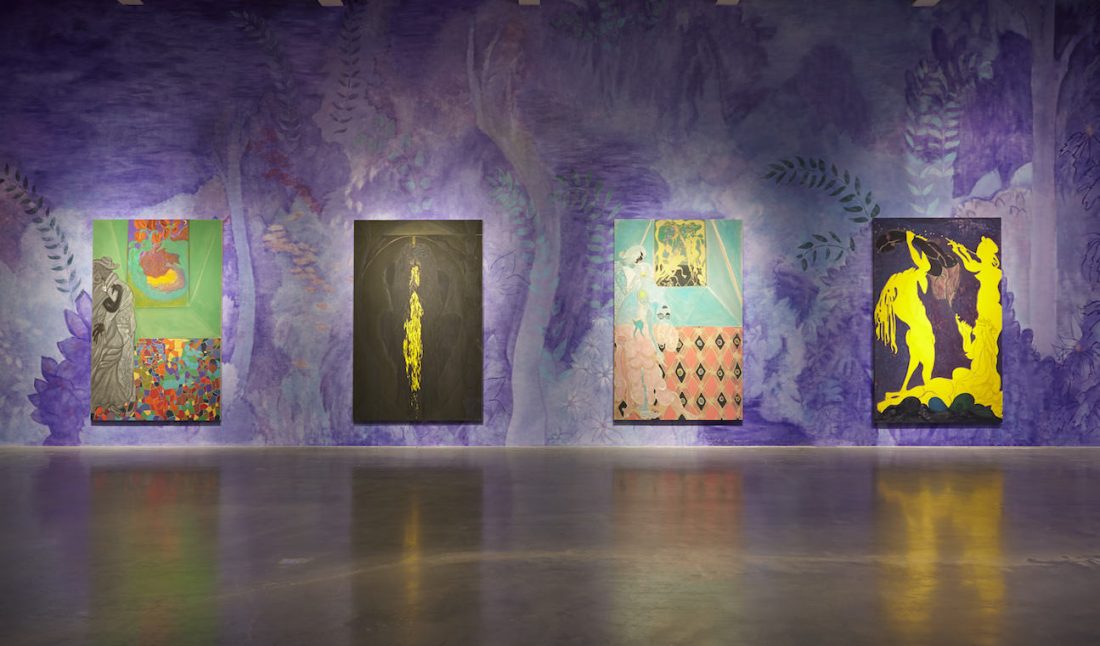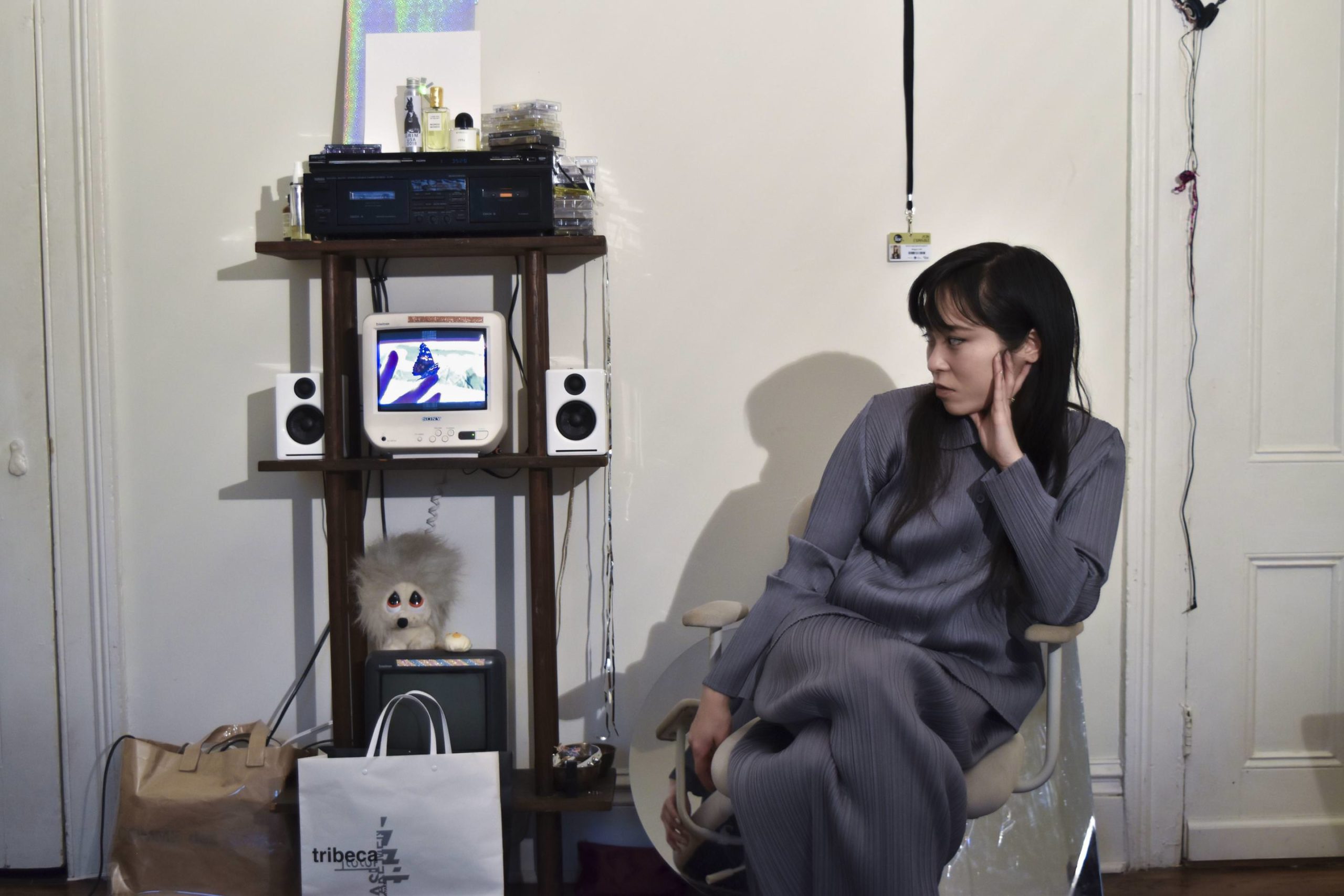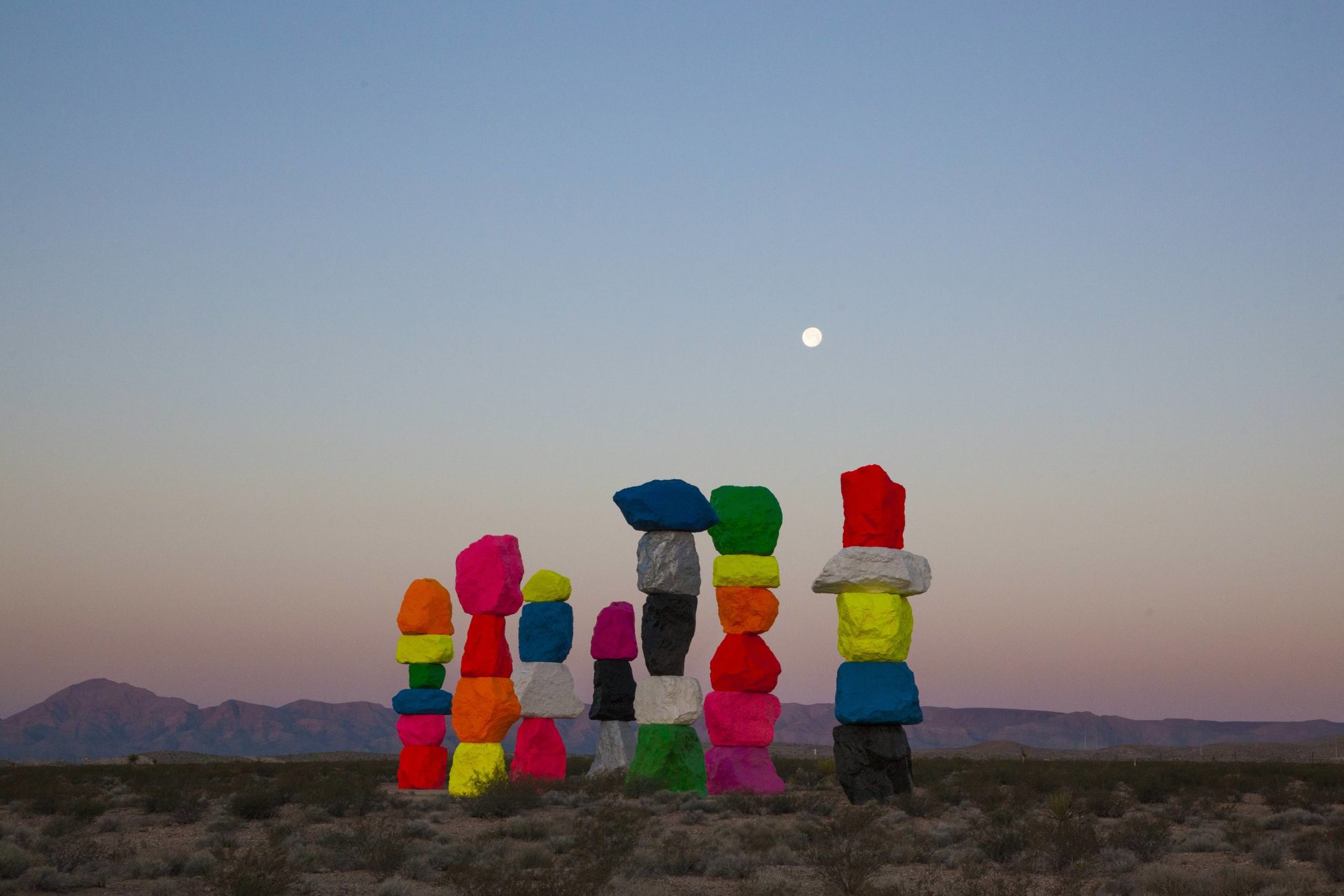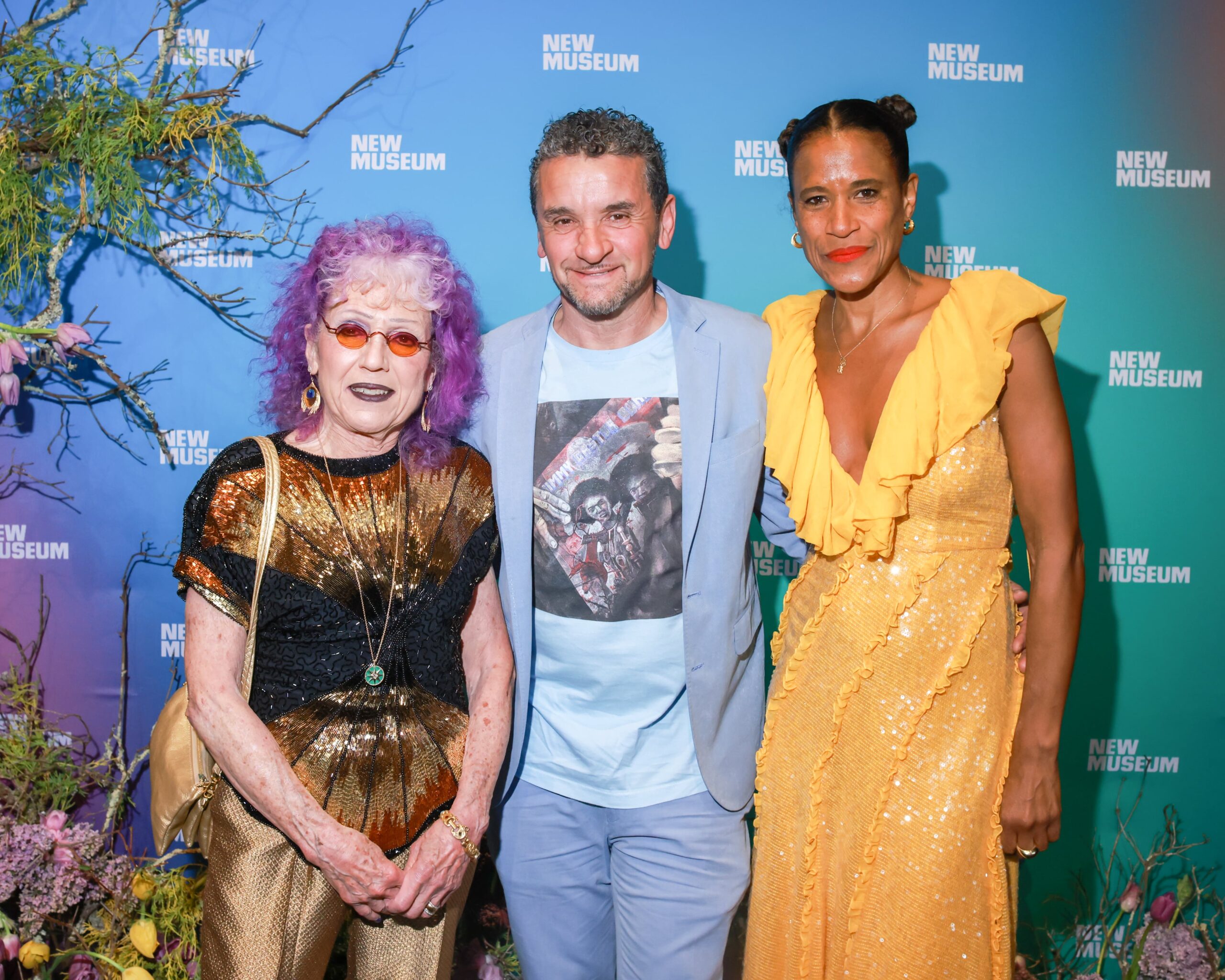The first major solo museum retrospective for British artist Chris Ofili in the United States is now up at the New Museum through January 25, 2015. “Chris Ofili: Night and Day” spans the artist’s 20-year practice with a selection of paintings, drawings, and sculptures that demonstrate a vast knowledge of historical and popular culture. The show, which occupies the second, third, and fourth floors of the museum, is more introspective than retrospective; it’s a comprehensive look at what has preceded Ofili’s vibrant contemporary practice.
On the second floor, the artist’s immaculate attention to detail comes to the fore in a series of large-scale paintings from the nineties. Layers of collage beneath glassy resin mingle with glitter, while meticulously applied dots of paint in swirling psychedelic patterns lend the works a beaded look. One of the first pieces in the show, Rodin…The Thinker (199-98) perfectly synthesizes the many facets of Ofili’s practice. Named for the French sculptor’s famed masterwork, the painting features a half-naked black woman assuming the same pose, with her right breast exposed and her round middle spilling over the waistband of her thong; to her right, spelled out in yellow letters on balls of elephant dung reads “Rodin.” She is at once a symbol of hip-hop culture, the hyper-sexualization of black female bodies, and the vast art historical history that precedes her.
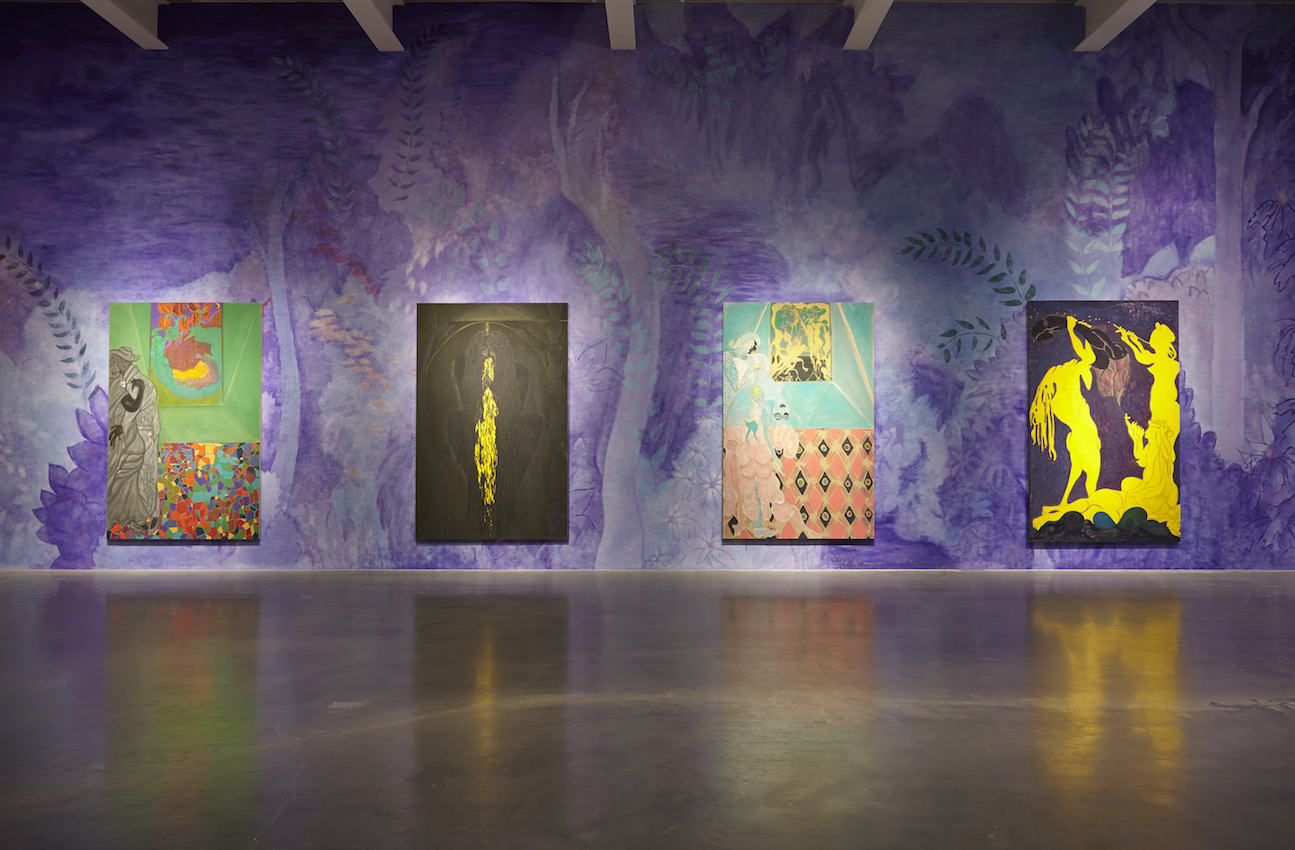 Chris Offili
Chris Offili Another work, entitled No Woman, No Cry (1998)is a portrait based on Doreen Lawrence, the mother of Stephen Lawrence, a black teenager from South London who was brutally murdered in a racial attack in 1993. The painting features her profile, with tears containing images of her son’s face streaming down each cheek – a lamentation of his death and a reminder of the racial prejudice that plagued the ensuing trial. Also featured here is The Holy Virgin Mary (1996), which 15 years ago caused uproar and controversy when it was shown at the Brooklyn Museum.
The next gallery features Ofili’s “Afro paintings” series; a collection of black, red, and green works. The colors are taken from the Pan-African flag, and symbolize skin color, blood shed for freedom, and Africa’s natural resources, respectively. These once again use masterful layering, and their geometric shapes and glittery, bead-like surfaces conjure the intricately sequined textiles of 1980s eveningwear. In the next room sits the Annunciation (2006), a large bronze sculpture that sexualizes the biblical tale that was so common to Byzantine and Italian Renaissance iconography, with Gabriel and Mary embracing, his large dark form dominating her golden frame. On the adjacent wall hang at least fifty of Ofili’s “Afromuses,” (1995-2005) watercolor portraits of men, women and couples who have inspired the characters for his large scale works.
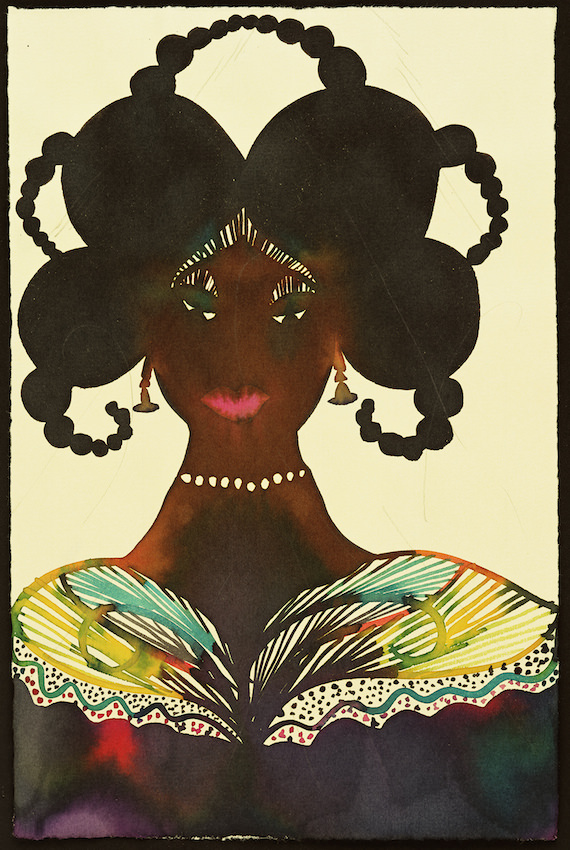 2014
2014 The third floor opens with a far quainter approach – a series of lovely abstract automatic graphite drawings, which prepare us for the greater leap into the next gallery. This dimly lit space holds eight, large-scale paintings from Ofili’s “Iscariot Blues” series. The works are inspired by the warm nights of Trinidad, where the artist has lived since 2005, and are painted in a palette of deep indigos and violets, under which shimmers a silvery coating that catches the dim light of the space, and gleams like dark water under moonlight.
These hues continue onto the walls of the fourth floor, where they are diluted and made into a watery, floral motif designed by the artist and executed by a troop of scenic painters. On top sit two series of paintings. The first, Ovid-Desire (2011-12), is based on the Roman poet’s epic “Metamorphosis,” and features saturated, color-blocked hues illustrating the narrative of the goddess Diana and hunter Actaeon. Ovid-Actaeon (2011-12) shows the mustard yellow silhouettes of goddess and hunter against a complementary violet backdrop. The second series, Lime Bar (2014), is a reference to Ofili’s experience as a bartender in Trinidad, where he was able to become somewhat invisible, taken as a native because of his skin color.
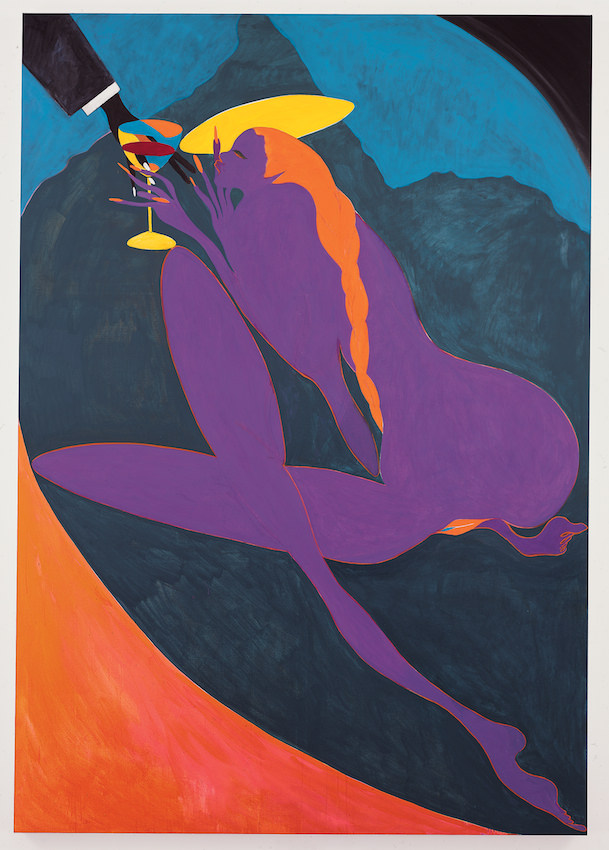 Photo by Benoit Pailley
Photo by Benoit Pailley
Ofili’s dexterous combination of geographically and temporally disparate references is at once impressive and thought-provoking, and even, at times, ludicrous. After all, a man with the audacity to adorn both Rodin’s The Thinker and the Madonna with elephant dung is not without humor. But there are serious questions about iconography, representation, and our collective relationship to visual culture embedded in Ofili’s jokes. In his hands, hierarchies of representation are dismantled and hip-hop, byzantine iconography, and elephant shit reside on the same plane.






